Indian spices names in Tamil, English and Hindi
There are more than 40 Indian spices which are used in cooking as well as medicines. Many are obscure and used only in certain regions, like stone flower and garcinia cambogia. Here is the list of 24 essential spices that are used in all Indian food as a flavoring agent, spice and also essentials in cooking. Most of the spices as its own medicinal properties like pepper is good for cold and cough, turmeric as its anti-biotic and antiseptic properties, Fenugreek keeps you blood sugar in control, Cinnamon helps you to lose the extra pounds and so on. And also there are many reasons behind using these spices in our Indian cooking. Our ancestors made us to use all the spices in our cooking so as to get benefits from the spices. As they considered the food as the medicine.
Getting familiar with these traditional spices is a great first step in your culinary knowledge. And I have given the Tamil names, English names and also the Hindi names of all the spices and its uses in cooking.
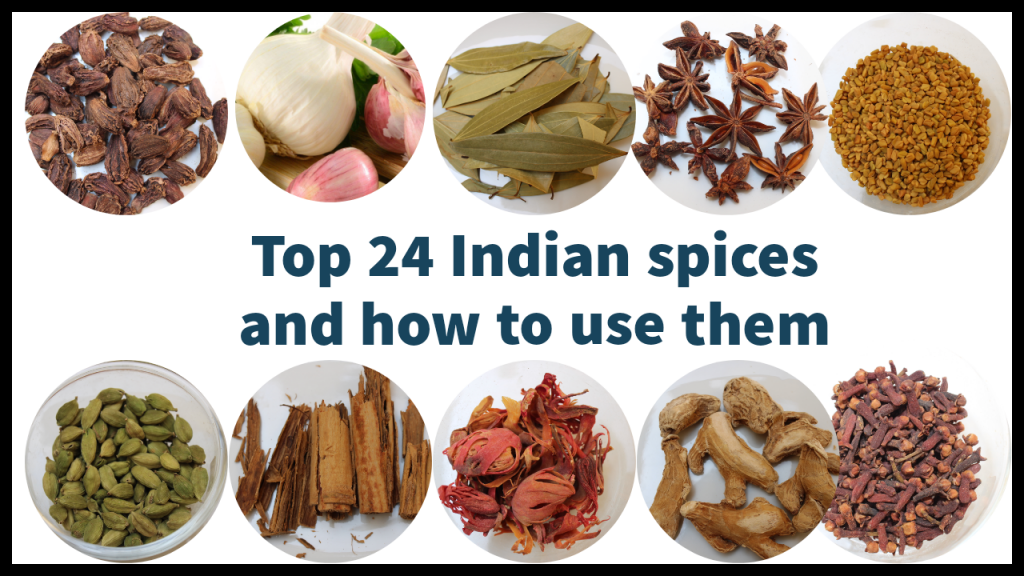
Briyani Ilai / Bay Leaves/ Tej Patta
Briyani leaf is included in all the briyani varieties and pulao varieties. It is included as a whole leaf and usually cooked for the length of the dish, removed just before serving. It’s aromatic flavour gives a nice smell to the dish as well. It also occupies an important space while preparing garam masala. And its usually added in mutton curry, mutton gravy, chicken gravies etc.
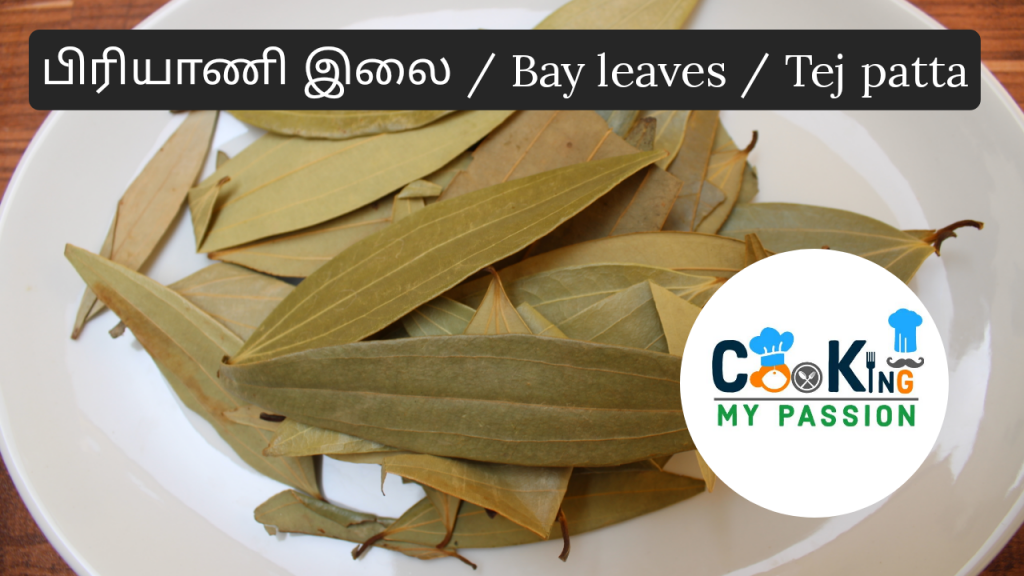
Malli Vidhaigal / Corainder seeds/ Dhanya
Coriander is the seed of cilantro, and is one of the most essential spices in our list. This seed has an aroma like citrus mixed with some leafy, woody notes, and is used in many dishes including like gravy and Kuzhambu variety. Ground into powder just prior to adding to a sauce is the best way to use coriander seeds. And also coriander seeds is used in making a gravy or kulambu thick. Most of the chettinad type of dishes they prepare a fresh batch of masala prior to cooking a non-veg gravy or curry.
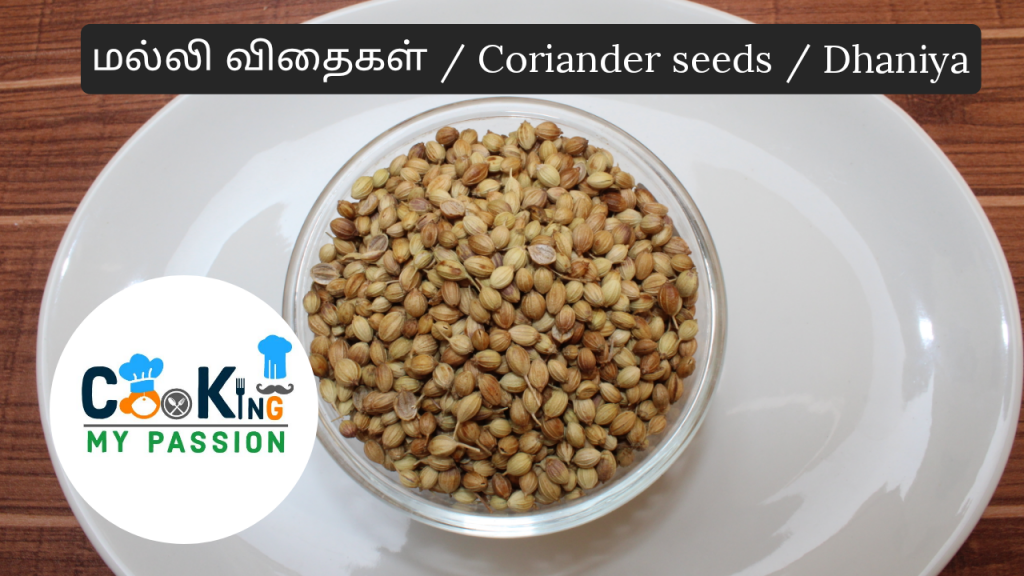
Elakkai / Green Cardamom / Chotti Elaichi
Cardamon is also a main ingredient in preparing a garam masala. And also cardamom is mainly used for its aroma in sweet dishes, kheer varities, payasam, Kozhukattai varities etc. Cardamom is also used while preparing a Briyani or Pulao variety.
Cardamom is good for curing stomach problems like indigestion, gas and constipation. The strong aroma enables the secretion of enzymes effective for digestion especially if consumed after heavy meals. Munching on cardamom helps fights bacteria that cause bad breath.
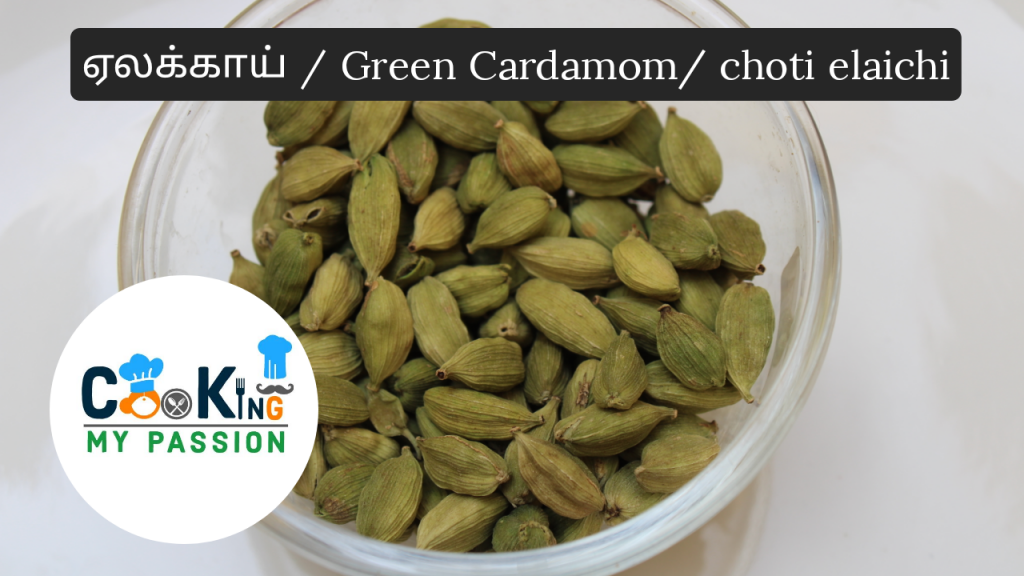
Inji / Ginger / Adarek
Of all Indian spices, Ginger is an absolutely essential ingredient for most curries, and is one half of the recipe for ginger garlic paste, used in most food of India. It’s fine to use this spice dried. Some recipes even use dry ginger powder for a marination purpose. Most Indian dishes call for ginger/garlic paste mainly for all non-veg curries and gravies we use ginger garlic paste in abundance. If you don’t have it, you can cut a 1-2 inch length of raw ginger, grated or minced and cook it with your garlic after you’ve clarified your onions. Make sure you have peeled the ginger first. We usually make ginger garlic paste and store in fridge in small batches, so that its handy for cooking. But freshly prepared ginger garlic paste cannot be a substitute.
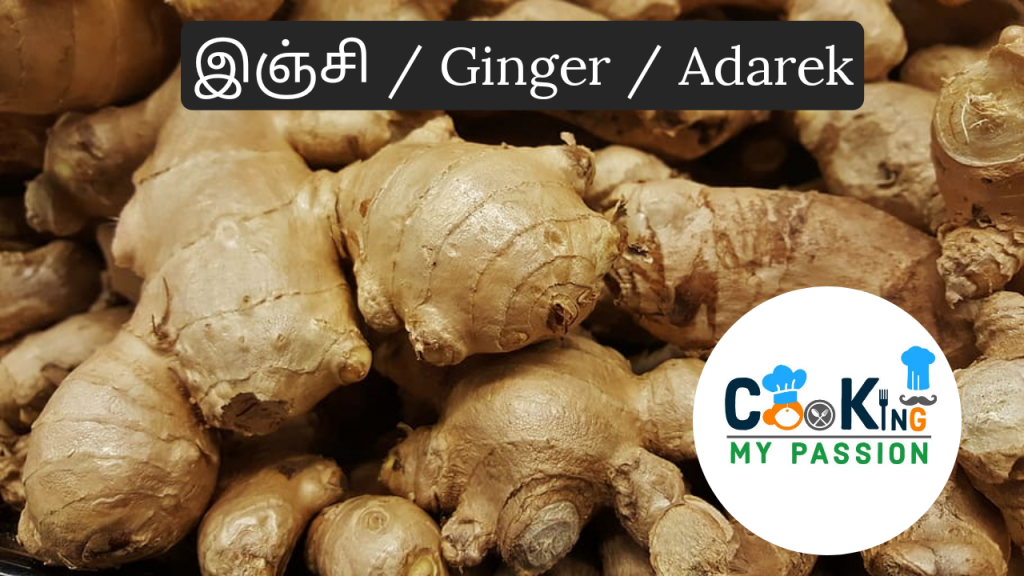
Jaathikai / Nutmeg / Jaiphal
In Indian cuisine, nutmeg is used in many sweet as well as savoury dishes, predominantly in Mughlai cuisine. It may also be used in small quantities in garam masala. Internationally, nutmeg is usually associated with sweet, spicy dishes like pies, puddings, custards, cookies and spice cakes.
Adding a pinch of nutmeg to your curries, soups and beverages can improve your digestion. The presence of essential oils in nutmeg has a carminative effect on the digestive system, which helps in relieving the discomfort caused due to bloating, constipation etc.

Jathipathri / Mace / Javitri
Mace is added for Briyani and for making garam masala, Kaala masala powder etc. Mace has good health benefits.
- It keeps digetive system healthy and provides relief to people suffering from constipation, bloating and gas related problems. Advertisement.
- Mace helps increase apetite and helps you eat healthy.
- It helps boost blood circulation.
- Mace is good for dental health and it keep bad breath at bay.
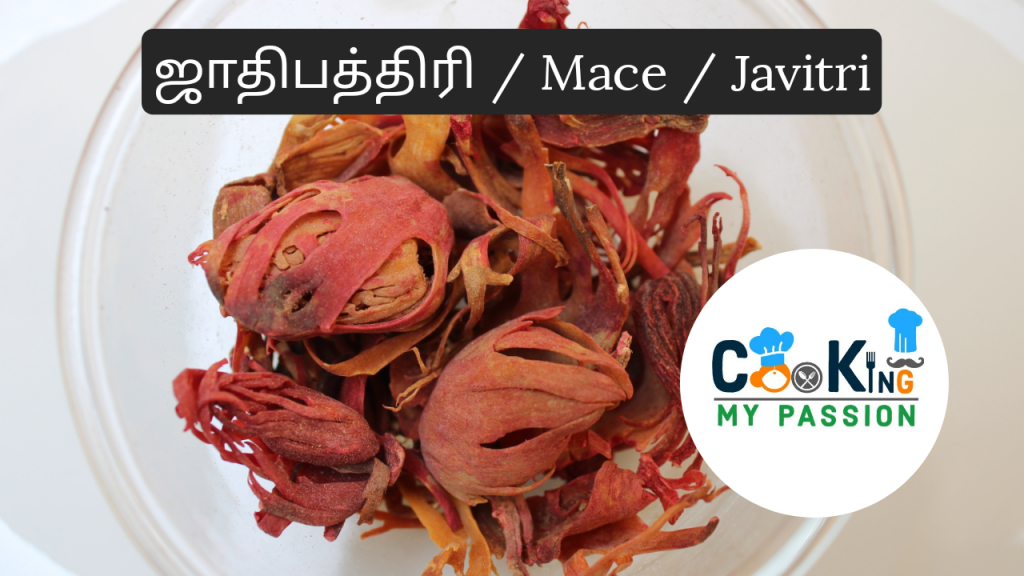
Kadugu / Mustard seeds / Sarason
Mustard seeds is mainly used in tadka in most of the Indian dishes. From sambhar, rasam, mor kuzhambu to all kind of pickle varieties. Some north Indian dishes use ground powder of mustard seeds in their dishes. Some of the health benefits of mustard seeds include
- Prevents cancer and ageing. Mustard seeds are packed with antioxidants which play a major role in keeping your skin young ang glowing.
- Promotes healthy skin. Mustard has various skincare benefits.
- Aids digestion.
- Good for heart health.
- Strengthens bones, teeth, and gums.
- Treats pain
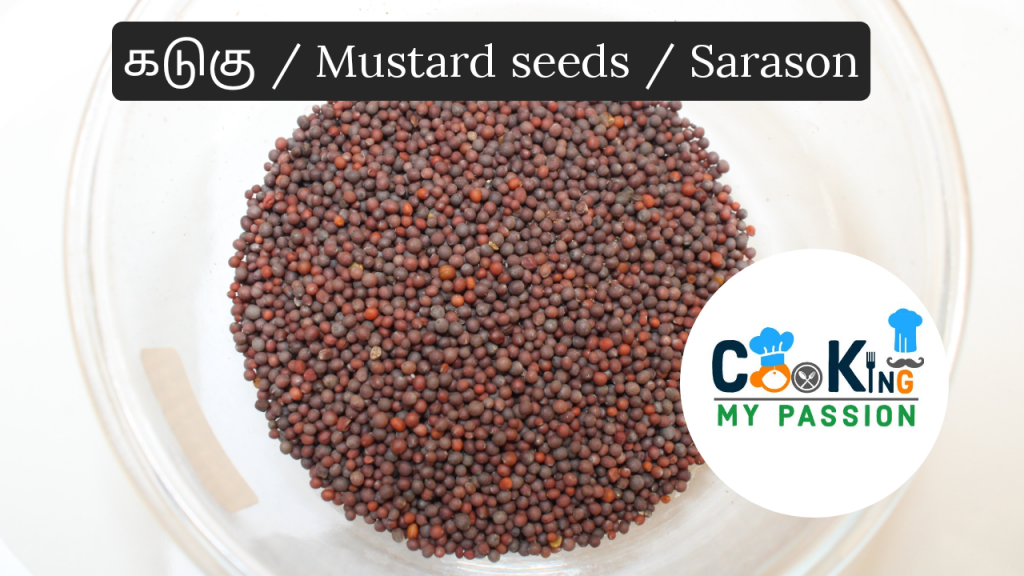
Kalpasi / Black stone flower / Dagad phool
Kalpasi or black stone flower has a very nice aroma. Its included in non-veg kurma and also ground masalas for Indian curries.
- Treats Kidney And Bladder Illnesses.
- Repairs Bruised Tissues.
- Mitigates Asthma Symptoms.
- Preserves Gut Health.
- Augments Heart Wellness.
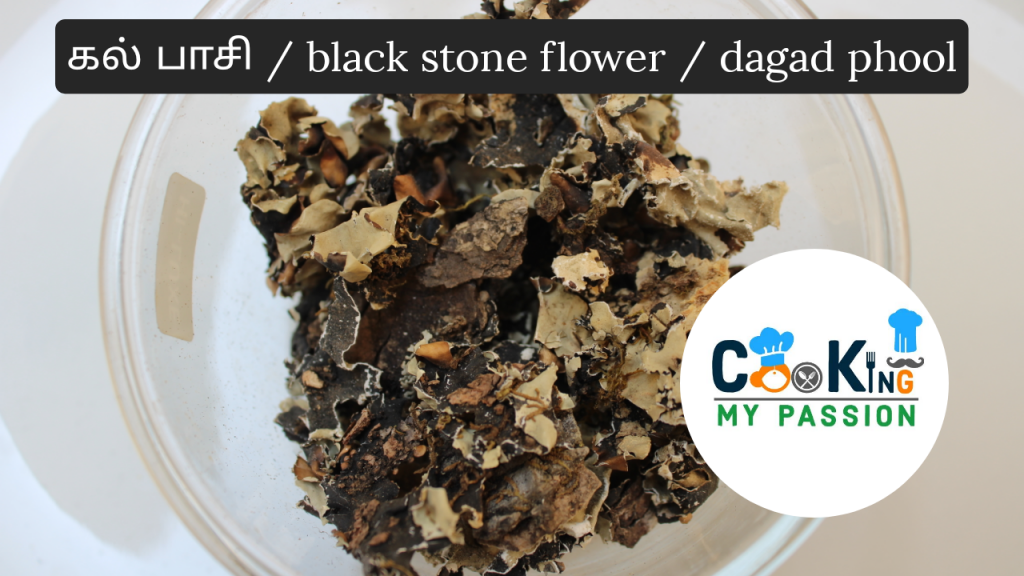
Karuppu Elakkai / Black cardamom / Kali Elaichi
Karuppu Elakkai or black cardamon pods can be used in soups, chowders / stews with milk or cream, casseroles and marinades for a smoky flavor. It also goes well in rice puddings, cakes, ginger fig chutney, payasam etc. Black cardamom is also used in preparing garam masala, which is commonly used to flavour Indian curries, snacks and rice preparations too.
Black cardamoms help stimulate gastric and intestinal glands. They help secrete stomach juices that promote digestion. This further prevents conditions like gastric ulcers, acidity, et al. The presence of vitamin C, an essential antioxidant, helps improve blood circulation throughout the body.
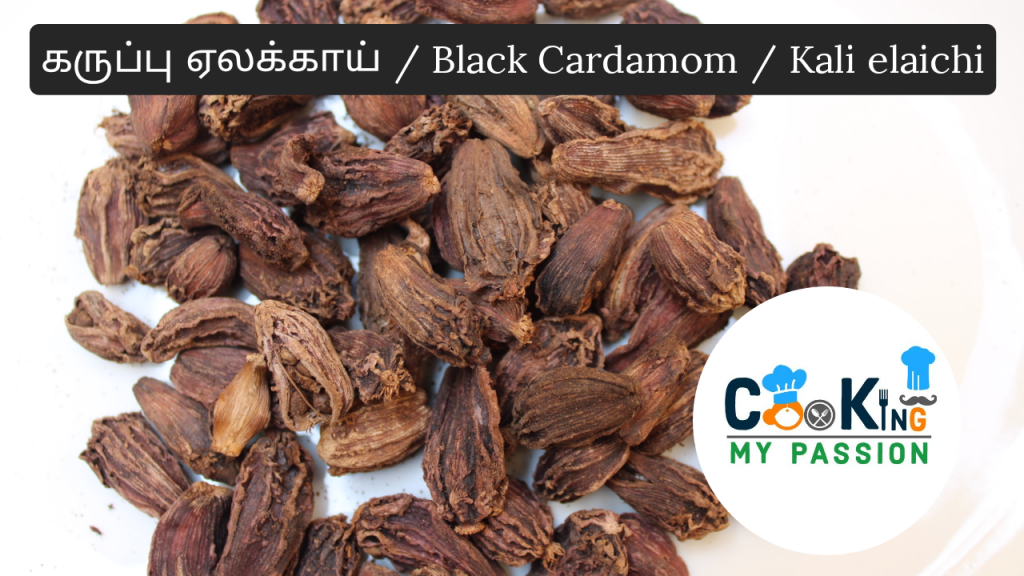
Kasa kasa / Poppy seeds / Khus khus
They are used in fruit salad dressings and fragrant yeast breads. Poppy seeds add a nutty flavour and texture to breads, cakes, cookies, pastries, curries, sweets, confectionary, pastry crusts, and pancake and waffle batters.
We also include in make fresh masala paste for curries both veg and non-veg. Khus khus also gives nice texture to gravy and Indian curries.
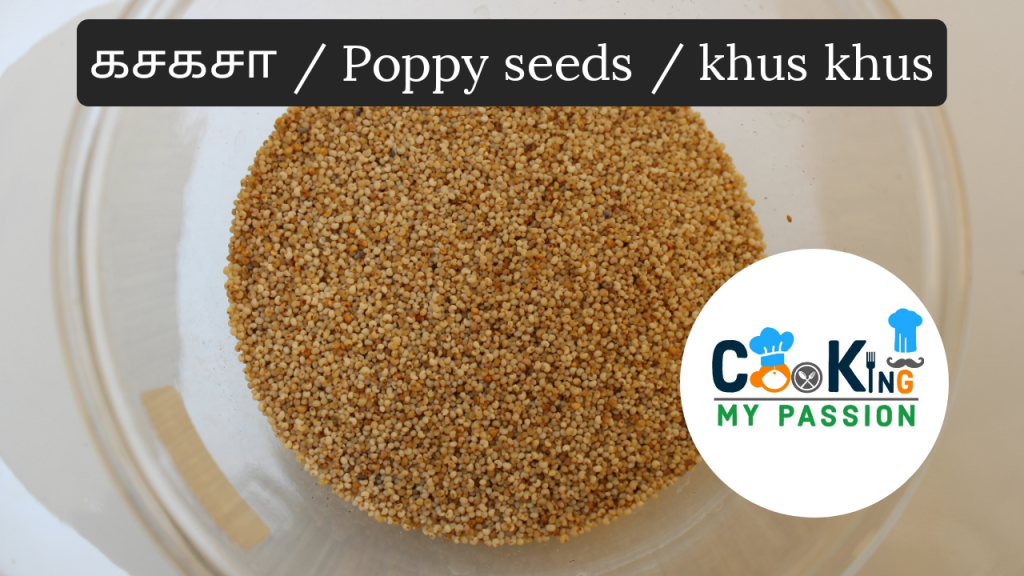
Kaindha vendhaya keerai / Fenugreek leaves / Methi leaves
Kasuri Methi is generally used as a condiment for flavouring various curries and subzis. It combines well with starchy or root vegetables like carrots, yams and potatoes. Add to whole wheat dough to make flavourful rotis and parathas. Add a teaspoon of dried fenugreek leaves to curries, as a spice, along with tomatoes. Usually kasuri methi is added at the final stage of cooking it gives nice taste and flavor to the dish. It is also good for health.
Benefits of Kasuri methi includes
- Lowers Cholesterol. It is helpful in keeping low cholesterol.
- Improves Flow Of Milk for Mothers.
- Beneficial For Skin.
- Good For Heart and Maintaining Diabetes.
- Helps In Reducing Platelet Formation.
- Keeps Blood Lipids Normal.
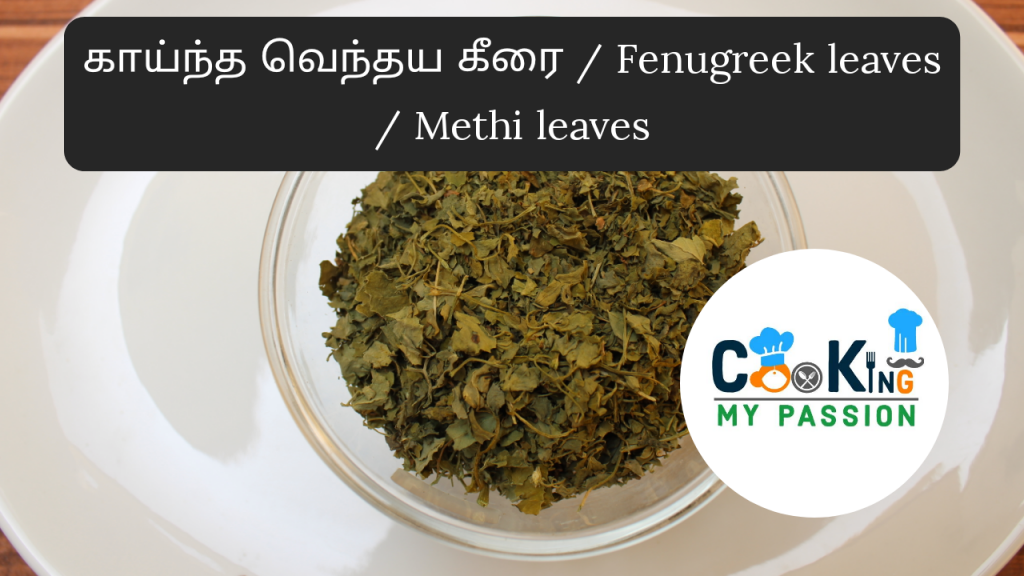
Krambu / Cloves / Lavang
Cloves are used often in Indian cuisine for their rich flavour and spicy aroma. Your mum may put cloves in holiday treats like wassail, a warm spiced cider. But they’re also commonly used in a variety of Indian meat, rice and vegetable dishes. You’ll find ground clove in garam masala. One of the main ingredients while preparing a flavorful Briyani, brinji rice etc.
- Contain important nutrients.
- High in antioxidants.
- May help protect against cancer.
- Can kill bacteria.
- May improve liver health.
- May help regulate blood sugar.
- May promote bone health.
- May reduce stomach ulcers.
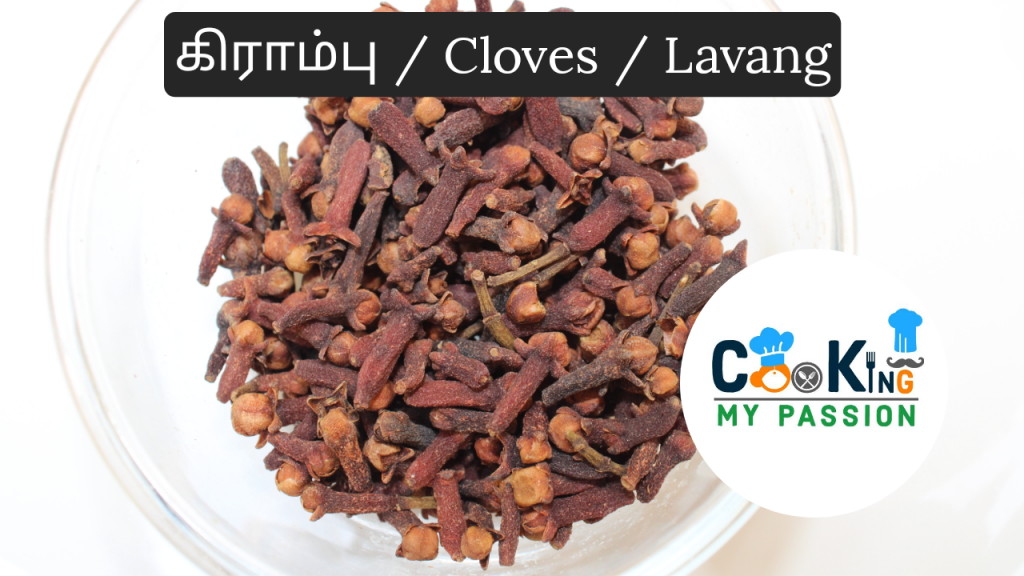
Mango powder / Amchoor powder
Culinary Uses of dried mango powder/ amchur powder in Indian Cooking. Amchur is commonly used for flavouring curries, chutneys, soups and marinades. It is a souring agent like tamarind and has tenderising qualities like lime juice. Amchur can be used instead of tamarind to prepare sweet-sour dal or sambhar. And can used in preparing tikka varieties to give the sour taste.
- Amchur powder improves your digestion and helps to fight acidity
- Mango helps your body in eliminating harmful toxins and detoxifies it
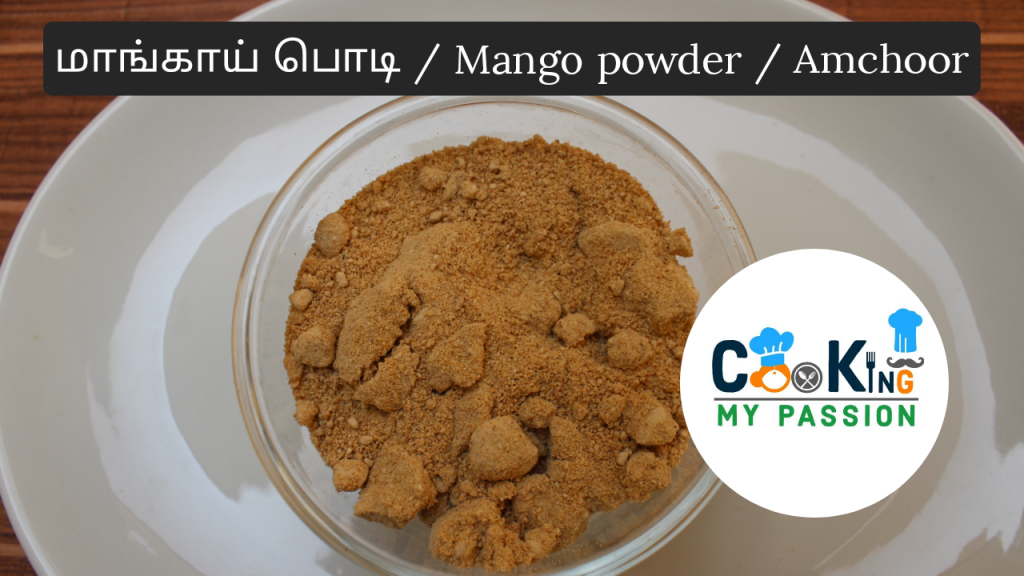
Milagu / Black Pepper / Kali Mirch
Black pepper is the most common kind of spice, used in India. Use crushed or whole in many recipes like pepper chicken or cracked pepper rice, black pepper is also added to garam masala and madras curry spice blend. South Indian rasam varieties, soup varieties, non-veg masalas definitely have pepper in it. Chettinad style dishes with freshly ground masalas for non-veg dishes surely have pepper in it.
- High in antioxidants. Free radicals are unstable molecules that can damage your cells.
- Has anti-inflammatory properties.
- May benefit your brain.
- May improve blood sugar control.
- May lower cholesterol levels.
- May have cancer-fighting properties.
- A versatile spice.
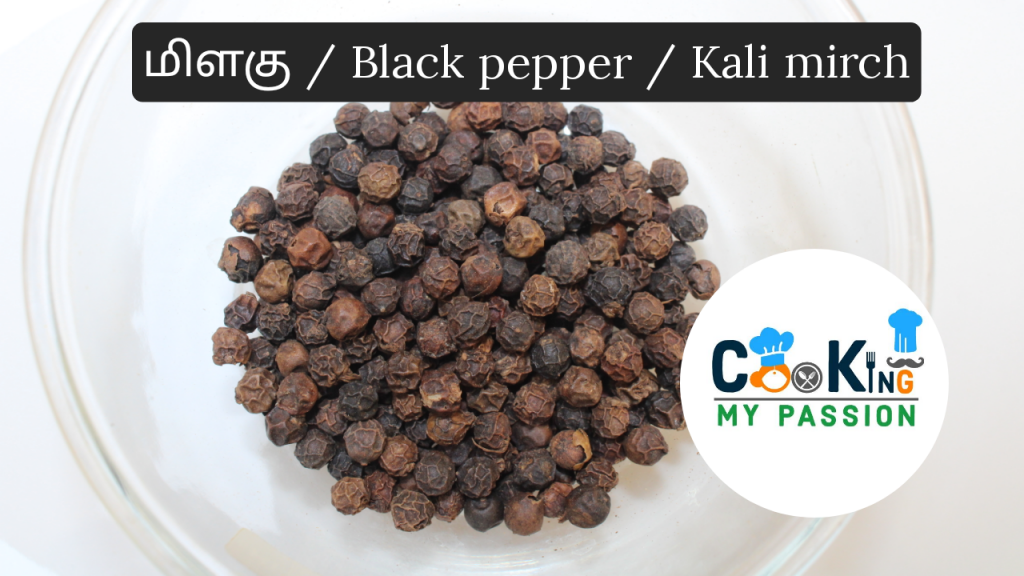
Natchathira sombu / Star Anise / Chakra Phool
Star anise is either used as a whole or in grounded form. Star anise seeds are popularly used as flavoring agents for tea, soups and marinades. Star anise is known to enhance the meat flavor and is an essential spice while preparing biryani and other masala items in the Indian subcontinent.
Anise also helps improve digestion, alleviate cramps and reduce nausea. Consuming star anise tea after meals helps treat digestive ailments such as bloating, gas, indigestion and constipation. Anise is one of the main ingredients in your favourite masala chai also.
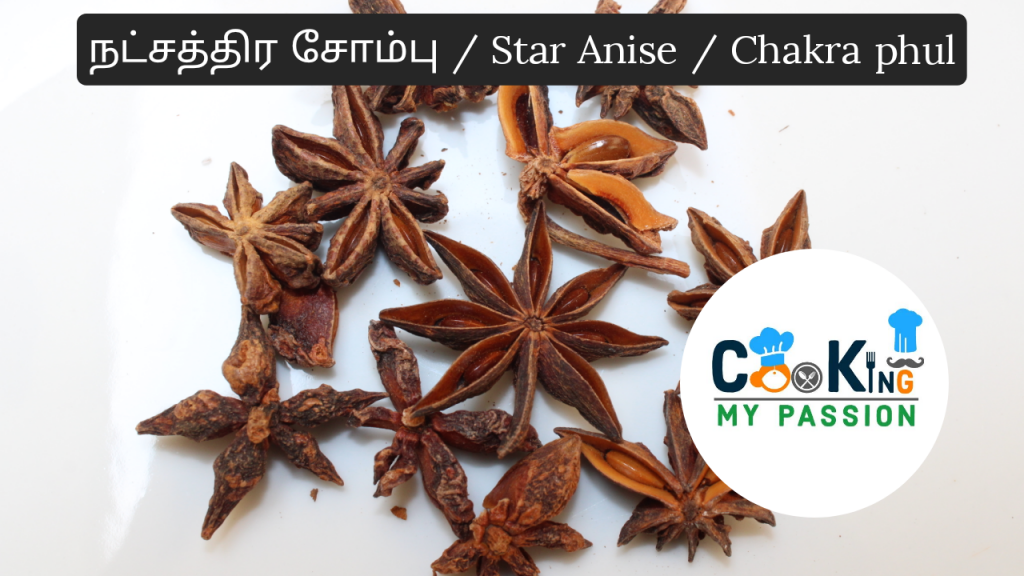
Omam / Carom seeds / Ajwain
In Indian recipes, ajwain is used in curries and as a tadka in pakoras and dals, as well as a flavoring in breads. Middle Eastern recipes incorporate carom to boost the flavor of meat and rice dishes and as a preservative in chutneys, pickles, and jams.
- Fight bacteria and fungi. Carom seeds have powerful antibacterial and antifungal properties.
- Improve cholesterol levels.
- May lower blood pressure. ..
- Combats peptic ulcers and relieves indigestion.
- May prevent coughing and improve airflow.
- Has anti-inflammatory effects.

Pattai / Cinnamon / Dalachini
It is commonly used in cakes and other baked goods, milk and rice puddings, chocolate dishes and fruit desserts, particularly apples and pears. In India it is used in curries and in garam masala. It is also often used in savory dishes of chicken and lamb.
Cinnamon has been shown to reduce levels of total cholesterol, bad cholesterol (LDL) and triglycerides, while maintaining levels of good cholesterol (HDL). The special compounds in cinnamon may help reduce the risk of heart disease.

Perungayam / Asafoetida / Hing
In Indian cooking, it is often used along with turmeric in various recipes like dal, chickpea curries, and different types of vegetable dishes based in potatoes and cauliflower. Asafoetida is usually quickly heated in hot oil and sprinkled on food. Asafoetida is used in savory dishes, often to add a more full flavor by mimicking the taste of onions, garlic, egg, and even meat. It’s a staple ingredient in Indian cooking, commonly used along with turmeric in lentil dishes like dal, and a variety of vegetable dishes.
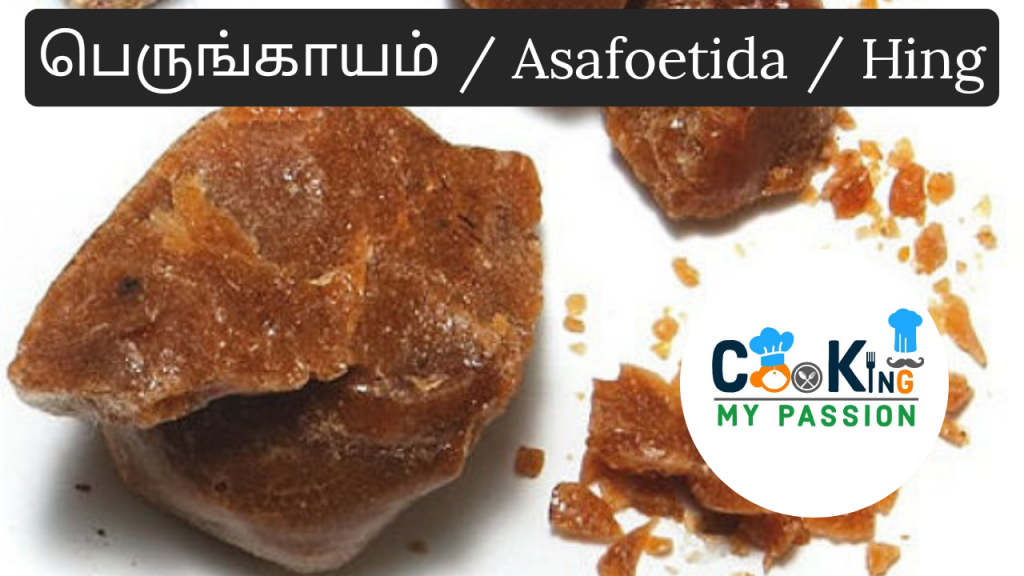
Poondu / Garlic / Lahasun
Garlic has near-deity status in Indian cuisine. It is used in paste form, to add flavour and thickness; tangy pack-a-punch chunks are sprinkled on meats; it is minced inside naan breads and sliced up in dips. Put simply, it’s more than your average seasoning. Ginger garlic paste is often used in Briyani vareities, non-veg dishes.
Garlic is low in calorie and fat content, which helps in shedding those extra kilos. As per experts, garlic is also packed with vitamins, minerals, antiviral and antibacterial compounds. This immunes our body and helps to fight several seasonal infections, including the common cough and cold.
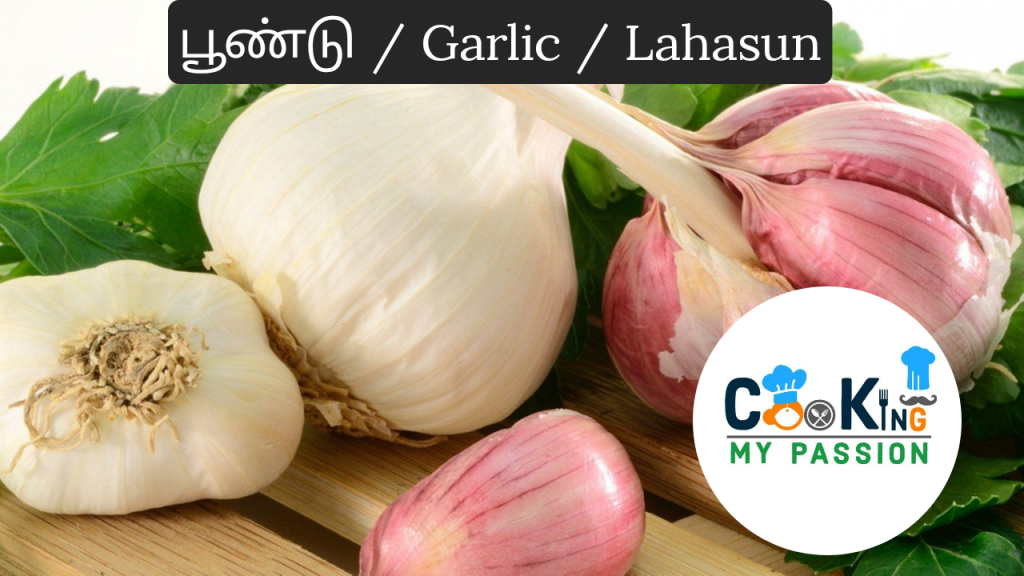
Seeragam / Cumin seeds / Jeera
Cumin is the most commonly used spice in Indian cooking and is known as Jeera. This is used as a whole spice and tempered in oil to allow its aromatics to penetrated the oil. It forms a lovely partner with mustard seeds especially in vegetarian dishes. Once ground it is used in marinades and masala pastes.
Health benefits include
- Contains antioxidants. Cumin seeds contain naturally occurring substances that work as antioxidants.
- Has anticancer properties.
- May help treat diarrhea.
- Helps control blood sugar.
- Fights bacteria and parasites.
- Has an anti-inflammatory effect.
- May help lower cholesterol.
- Aids in weight loss.
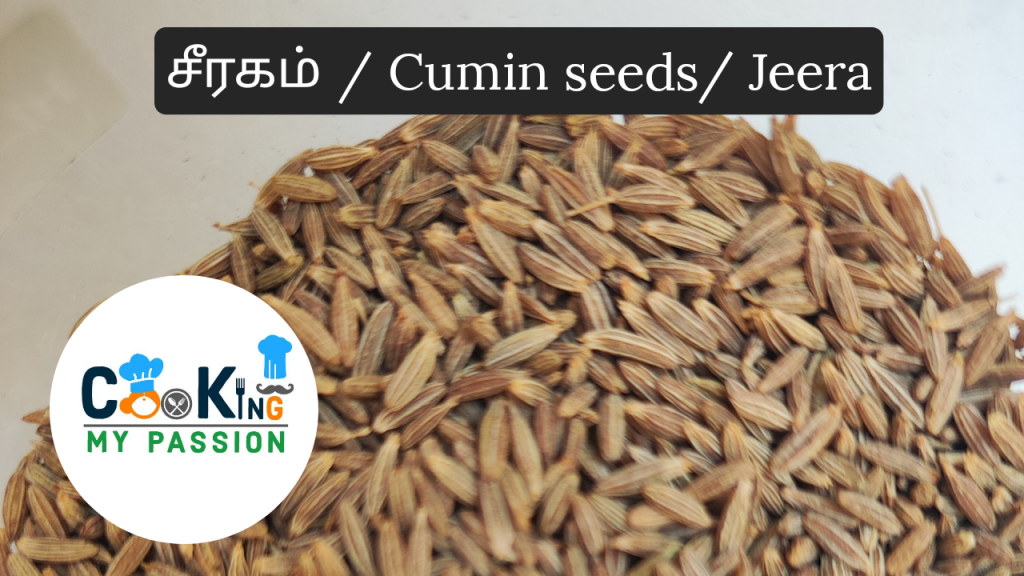
Sombu / Fennel / Saunf
Saunf is often used in Tadka or tempering of dishes and in pickles and chutneys. It is also considered a digestive and mouth freshener. The seeds are chewed by many as an after-dinner ‘mint’ and can often be seen in Indian restaurants to take as a digestive on the way out.
Indian Restaurants serve fennel seeds and mishri or sugar coated saunf after a meal to prevent gas and indigestion. One of the best natural remedies for gas and home remedy for acid reflux is to chew on a few fennel seeds regularly. Saunf helps relieve abdominal cramps, gas, flatulence, bloating and constipation.

Sukku / Dry ginger / Sonth
Dried ginger powder is used in making spices and masalas, which are used in gravies, curries, marinades, stews etc. 1. Garam Masala easy to make as it involves roasting and blending of Indian spices.
- Weight loss. Dry ginger facilitates weight loss by improving digestion, which helps in burning stored fat and processing glucose in the blood.
- Lowers cholesterol.
- Indigestion.
- Menstrual pain.
- Nausea and morning sickness.
- Lowers blood sugar.
- Inflammation.

Manjal / Turmeric / Haldi
Indian food needs turmeric. Turmeric, a ground spice, has an earthy supporting flavour. Of all the spices used in Indian cooking, this one has huge health benefits, and an astounding yellow colour. The turmeric root is dried and then the powder is made from it. As I remember my mom give turmeric milk for cold and cough. And also turmeric is used while cooking non-veg items like fish, prawns and other meat. It also kills germs if any from them. People also use turmeric while cleaning the non-veg items like a fish to get rid of the raw smell along with the dash of lemon.
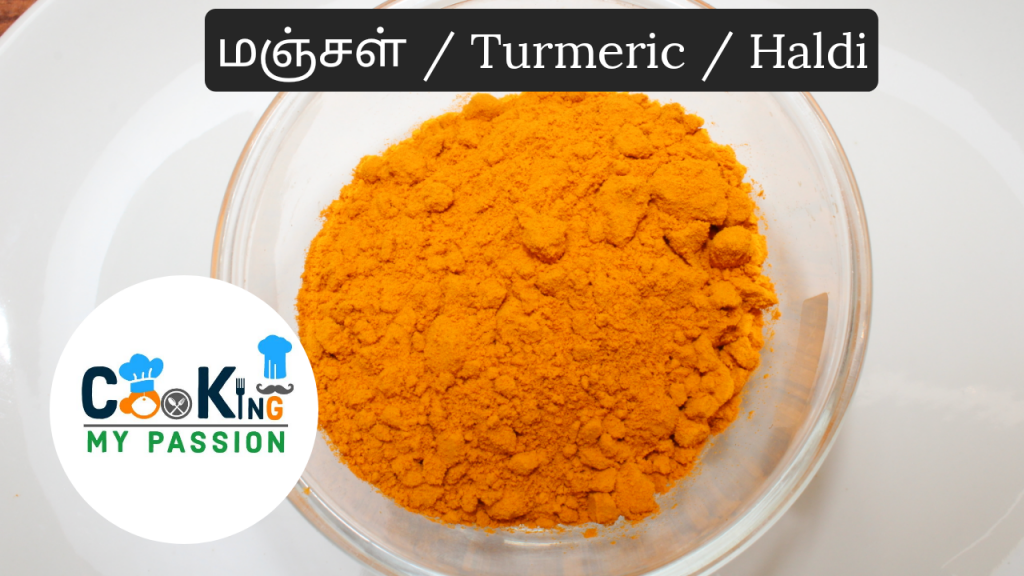
Vendhayam / Fenugreek / Methi
Fenugreek seeds are one of the staple spices used in Indian cooking, with a sweet, nutty flavor reminiscent of maple syrup and burnt sugar. It can be incredibly bitter when eaten raw, but when cooked and combined with aromatics and spices, it transforms and gives a sweetness and depth of flavor to saucy dishes.
It’s has soluble fibre which helps in reducing cholesterol especially LDL, controls blood sugar levels and helps lose weight by suppressing appetite if taken soaked overnight on empty stomach in the morning.
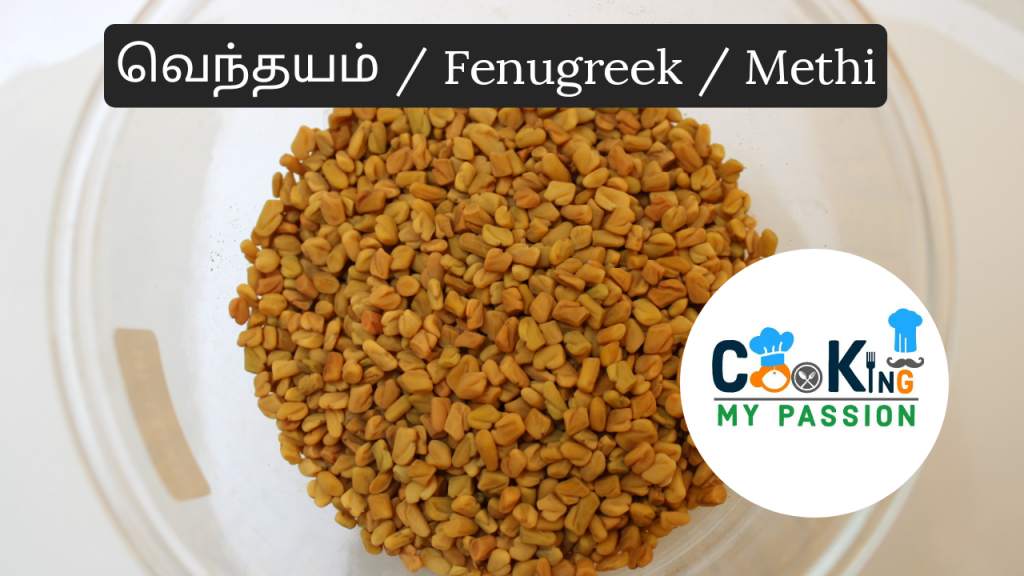
Source : www.healthline.com

Leave a Reply
You must be logged in to post a comment.